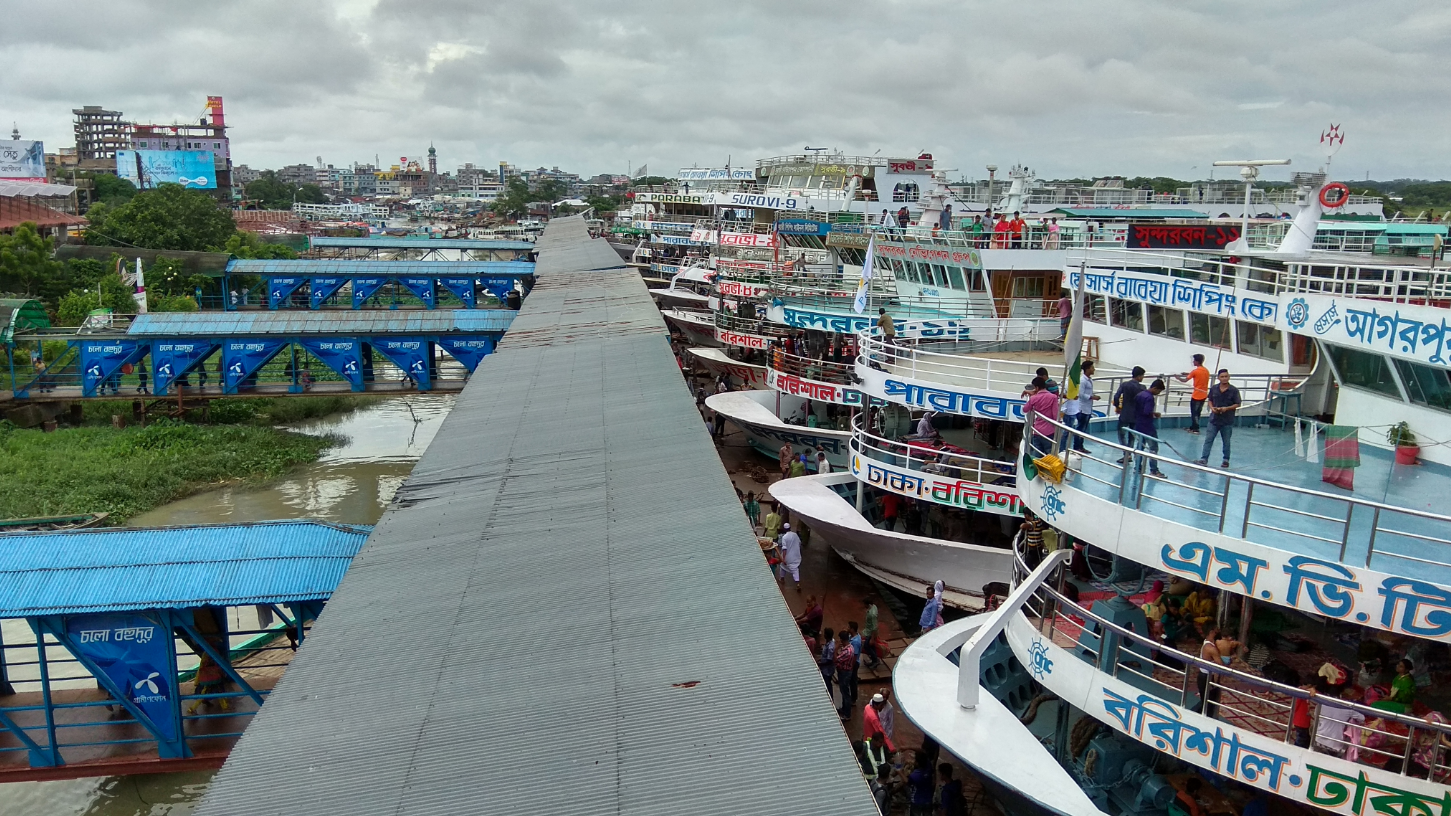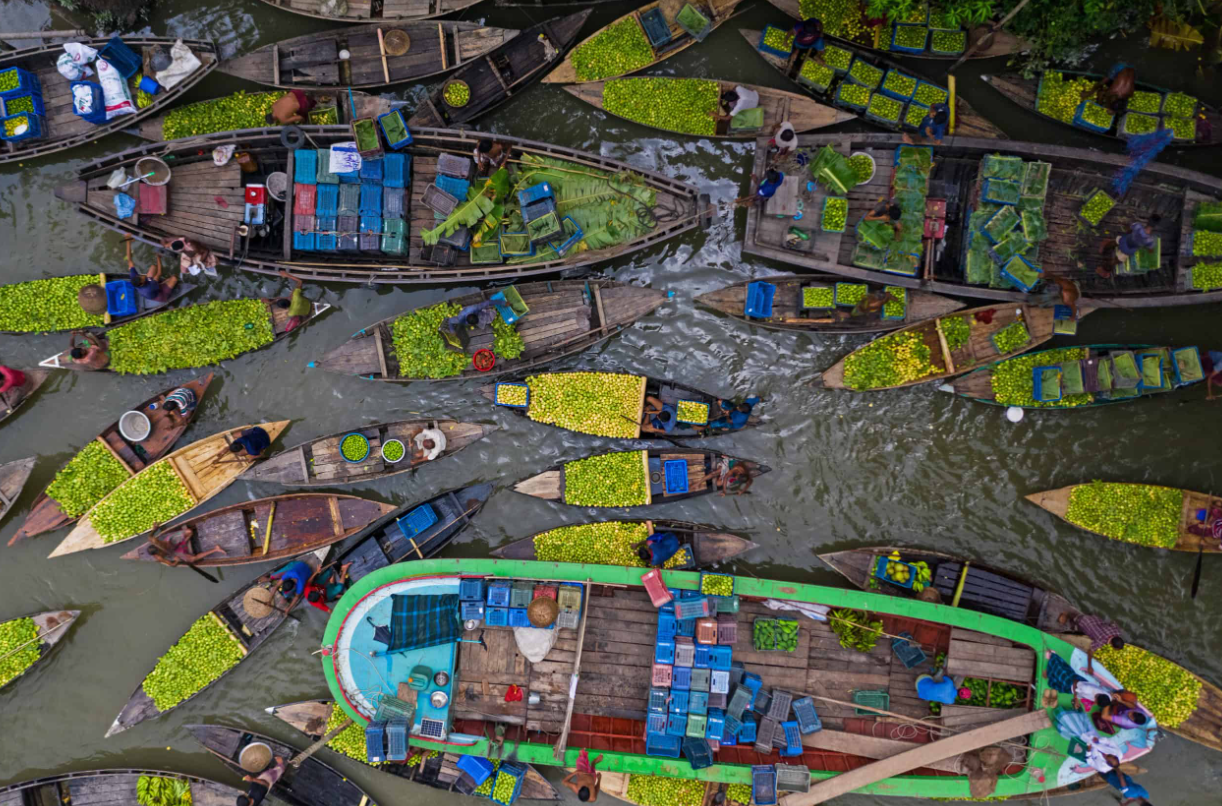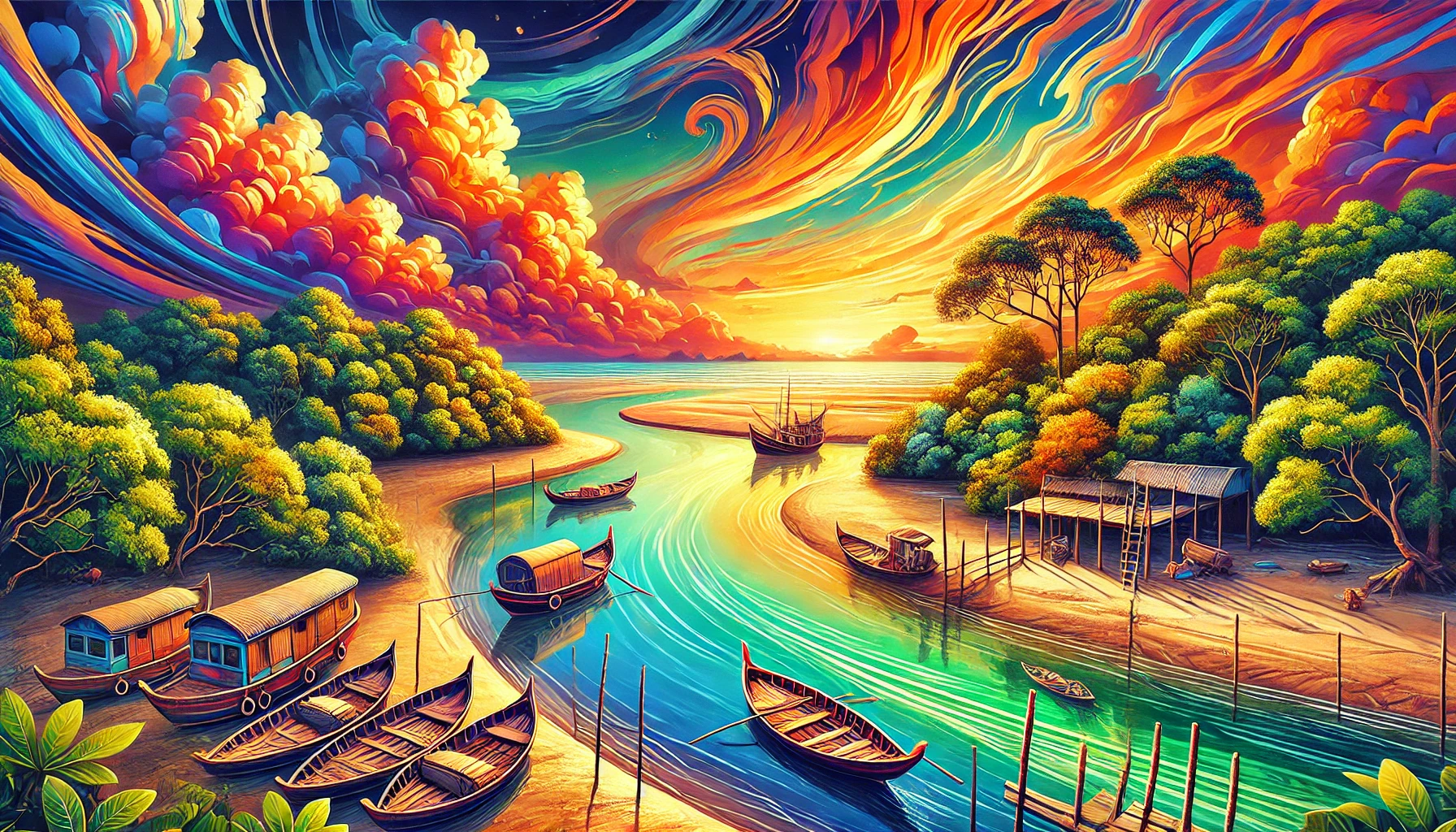Bhola, the largest island district in Bangladesh, lies at the heart of the nation’s riverine and coastal ecosystem. Part of the Barisal Division, this enchanting region is encircled by the mighty Meghna River, Tetulia River, and the Bay of Bengal. A haven of natural beauty, rich culture, and significant economic potential, Bhola is often called the “Pearl of the South.”
Geography and Natural Features
Bhola spans approximately 3,403.48 square kilometers, with over half of its area consisting of rivers and estuaries. The district’s geographical location makes it a vital part of Bangladesh’s ecological and economic framework.
The region’s natural landscape includes sprawling wetlands, riverine forests, and sandy beaches. The Meghna River defines Bhola’s western boundary, while the Bay of Bengal touches its southern shores. The interplay of freshwater and saltwater ecosystems in Bhola creates a unique habitat for diverse flora and fauna.
Historical Background
Bhola’s history is deeply rooted in the socio-political and economic changes that swept through Bengal over the centuries. During the Mughal era, the district was part of a thriving trade network due to its strategic location. Later, during the British colonial period, Bhola became an important center for jute cultivation and export.
The district also played a significant role during the Liberation War of 1971, with its people contributing to the fight for independence. Today, the legacy of Bhola’s past continues to shape its cultural identity and development trajectory.
Administrative Divisions and Upazilas
Bhola comprises seven upazilas , each with unique features and attractions:
- Bhola Sadar: The administrative and economic hub, known for its bustling town center and cultural vibrancy.
- Char Fasson: Famous for its lush greenery, agricultural prosperity, and the Char Kukri Mukri Wildlife Sanctuary.
- Monpura: A serene island offering breathtaking views and eco-tourism opportunities.
- Doulatkhan: Renowned for its fishing community and traditional markets.
- Burhanuddin: An emerging center for education and small industries.
- Lalmohan: Known for its vibrant cultural festivals and thriving trade.
- Tazumuddin: A tranquil region with scenic beauty and a rich fishing heritage.
Major Tourist Attractions in Bhola
Bhola is a treasure trove of natural and man-made attractions:
1. Char Kukri Mukri Wildlife Sanctuary

Located in Char Fasson, this sanctuary is a haven for nature lovers. It hosts diverse wildlife, including spotted deer, wild boars, and an array of bird species. The mangrove forests and tranquil environment make it a prime destination for eco-tourism.
2. Monpura Island
Monpura’s pristine beauty has earned it a reputation as one of the most picturesque spots in Bangladesh. Surrounded by the Meghna River and Bay of Bengal, this island offers visitors a peaceful retreat. It gained fame as the backdrop for the popular Bangladeshi film Monpura.
3. Haringhata River Estuary
This estuary is a natural marvel where the Meghna River meets the Bay of Bengal. The region is ideal for bird watching, fishing, and experiencing the awe-inspiring views of sunrise and sunset.
4. Meghna River and Tetulia River
The lifelines of Bhola, these rivers not only support the local economy but also offer breathtaking boat rides. The serene waters and surrounding greenery create an idyllic environment for photography and relaxation.
5. Majestic Beaches and Sandbars
The district is dotted with sandy beaches and dynamic sandbars that emerge during low tide. These spots provide excellent opportunities for picnics, camping, and exploring the natural beauty of the coastal areas.
Economic Activities in Bhola
Bhola’s economy thrives on agriculture, fishing, and trade. The fertile alluvial soil supports the cultivation of rice, jute, vegetables, and various fruits. Fishing is a major livelihood for the coastal population, with Hilsa fish being the most prized catch.
In recent years, Bhola has gained prominence for its gas fields, which hold potential for national economic growth. The Shahbazpur Gas Field is a key resource, contributing to the energy needs of the country.
Culture and Festivals
Bhola’s culture reflects a harmonious blend of traditional and modern influences. Local festivals, such as Nabanna (harvest festival) and Pohela Boishakh (Bengali New Year), are celebrated with great enthusiasm. Folk music, including Baul and Bhatiyali songs, plays a significant role in preserving the district’s heritage.
Famous Personalities from Bhola
Several notable individuals have emerged from Bhola, contributing to the nation’s cultural and political landscape. Among them are:
- Abdul Momin Chowdhury: A prominent historian and academic.
- Tajuddin Ahmad: A political leader who served as the first Prime Minister of Bangladesh.
- Kazi Mohammad Shafiullah: A renowned freedom fighter and army officer.
Challenges and Climate Change Impacts
As a coastal district, Bhola faces significant challenges from climate change, including rising sea levels, river erosion, and frequent cyclones. These issues pose threats to the livelihoods of its residents and the region’s infrastructure.
Efforts are underway to mitigate these challenges through embankment construction, afforestation, and disaster preparedness initiatives. Additionally, Bhola’s unique position as a low-carbon energy producer (due to its gas reserves) offers a pathway toward sustainable development.
Future Prospects
Bhola has immense potential for growth in eco-tourism, renewable energy, and modern agriculture. With proper investment and infrastructure development, the district could become a model for balancing environmental conservation and economic progress.
Conclusion
Bhola is a district of unparalleled charm and resilience. From its stunning natural beauty and rich cultural heritage to its growing economic significance, Bhola encapsulates the spirit of Bangladesh’s southern regions.
Whether you’re drawn by its serene rivers, vibrant wildlife sanctuaries, or the warm hospitality of its people, Bhola promises an unforgettable experience. It stands as a testament to the harmony of nature and human endeavor, making it a must-visit destination for travelers and a proud emblem of Bangladesh’s rich heritage.




